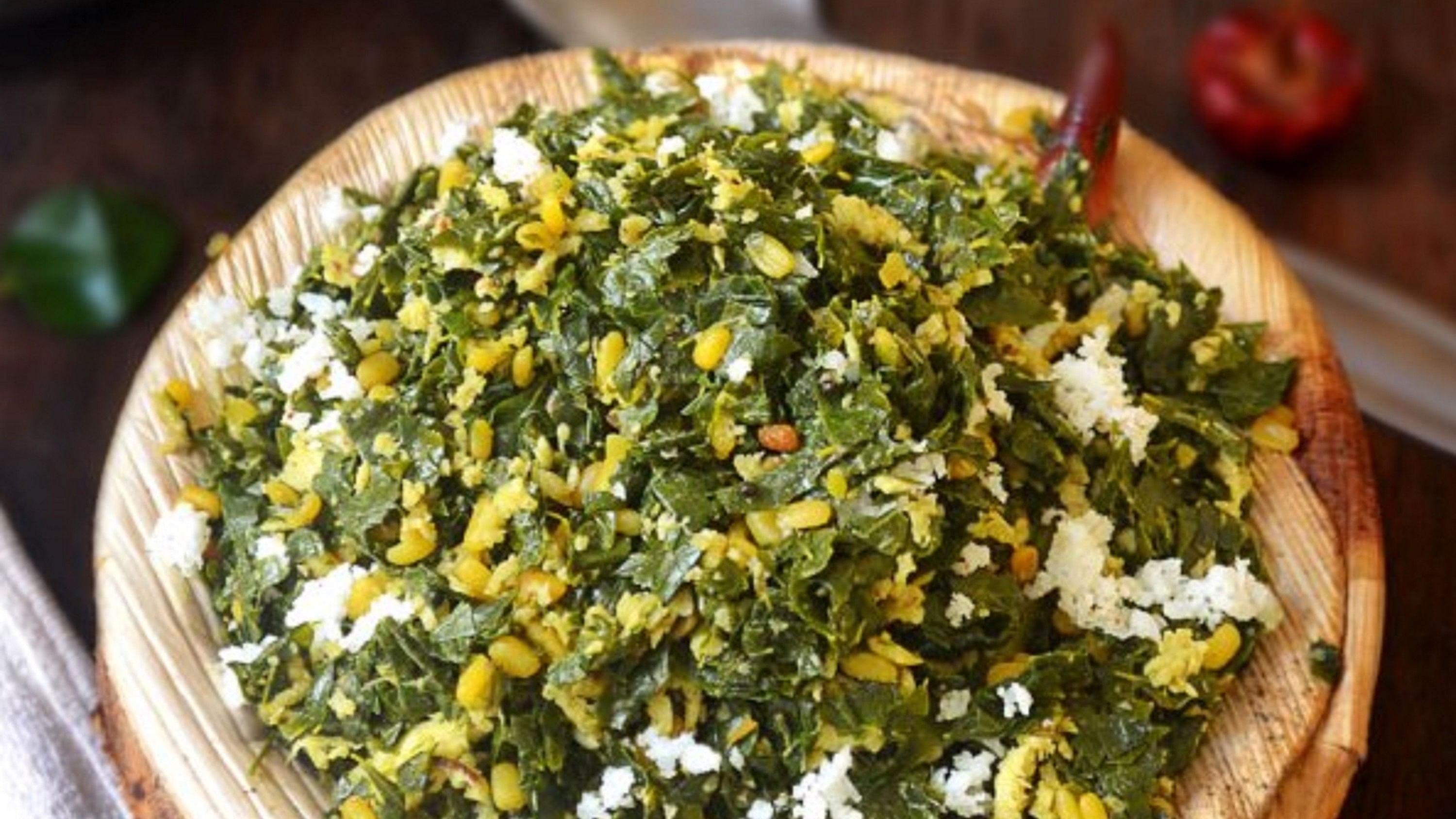
A dish made from moringa leaves.
The monsoon brings great relief from the scorching heat and along with it, a bounty of fresh, exotic vegetables to the Belagavi region in North Karnataka. The land here is rich with several tributaries of the Krishna, Ghataprabha and Malaprabha rivers that flow in full spate in the monsoon. This makes the region fertile for agriculture.
The villages surrounding Belagavi are known for their fresh vegetables that flock the city’s markets and also travel to places like Hubballi, Kolhapur and Goa. These seasonal leafy greens and vegetables not only add vibrancy to the local cuisine but also hold cultural significance.
They give us a peek into how our ancestors wove nutrition into the cultural fabric. The heavy monsoons of the Western Ghats made it impossible for someone to venture out and purchase vegetables. So it was then that foraging for vegetables and plants growing in the wild became part of the daily routine of locals during this season. One can find many of these plants making their way into ‘kashayas’ and ‘tambulis’ during monsoon, as the ingredients are believed to be immunity boosters. This includes ‘nela nelli’ (Phyllanthus niruri) and lemongrass.
Also, in the realm of food security, this is the very group of plants, fruits and vegetables that has been overlooked, despite its immense potential to promote biodiversity and adapt to challenging environmental conditions. These often forgotten resources are known as ‘Neglected and Underutilised Species’ (NUS), and they play a crucial role in the effort to achieve global food security. NUS encompasses a wide array of such plants which can have immense nutritional value.
Foraging specialties
Green leafy vegetables are not only delicious but also rich in essential nutrients. The various preparations they feature in are a testament to the diversity and culinary richness of the North Karnataka cuisines.
Lal math (red spinach) or harive soppu is a variety of reddish-purple leafy greens used in stir fries or gravies.
Gajabaje ambat is a speciality dish prepared using colocasia leaves with yam or breadfruit in the Konkani community. The colocasia leaves also find a place of pride as alu vadi (dipped in flour and fried) or patal bhaji (a gravy-like dish).
Basale soppu (Malabar spinach), menthya soppu (fenugreek leaves), agathi soppu (August tree leaves), nugge soppu (drumstick leaves) and gongura (red sorrel leaves) are used in stews, stir-fries, curries, dals and other preparations.
Turmeric leaves are used to prepare a special delicacy called patoli or ukdiche modak. It uses rice flour with a sweet mixture of coconut and jaggery rolled and steamed in the leaves, lending it a unique flavour. Fresh green turmeric is also available in this season and is used to make delicious pickles.
Tondli (ivy gourd) is a staple monsoon vegetable in Belgavi. It is often used in curries and stir-fries. Bimbul, or cucumber tree fruits, are small, tart fruits used in pickles and chutneys. Karale, also known as bitter cucumber, is a bitter gourd variety that thrives during the monsoon.
Kartoli, a spiny gourd, is also funnily called ‘Ilikayi’ in the Belagavi region owing to its resemblance to a mouse. It is a popular, nutritious vegetable that is available only for about a month. It is commonly deep-fried to make pakodas or chips.
Bamboo shoots and mushrooms are a hit with many who prefer a vegetarian diet in the monsoon. They are found only in certain Belagavi markets. Farmers usually search for wild mushrooms in the fields early in the morning. They are quite expensive, considering the rarity and effort involved in collection.
Cultural significance
These monsoon vegetables are more than just ingredients — they hold cultural significance in the region. In Belagavi, the monsoon season is also a time for celebrations and festivals. The arrival of these vegetables marks the beginning of the festive spirit.
Several festivals make use of these vegetables, fruits and plants as part of the rituals. Celebrations like Nag Panchami, Janmashtami, Mangala Gauri and Ganesh Chaturthi involve the use of foraged flowers, leaves, vegetables and fruit growing in the wild.
Furthermore, their nutritional benefits make them an essential part of a healthy monsoon diet. So, if you find yourself in Belagavi during the monsoon season, do not miss the opportunity to savour these delicacies.